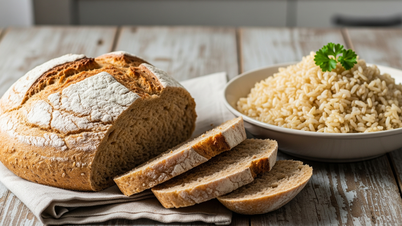If you've been walking regularly but aren't losing weight, it could be due to one of the following reasons:
No longer stimulating enough
The body is very smart. If we always walk at the same speed and distance for many days, the body will quickly adapt, thereby reducing the effectiveness of burning calories over time. Eventually, fat loss will stagnate. To overcome this situation, the practitioner needs to increase the difficulty, such as trying to walk faster, climb hills or apply the high-intensity interval method, according to the health website Verywellfit (USA).

To reduce fat sustainably and avoid muscle loss, exercisers need to combine walking with strength exercises.
PHOTO: AI
Walking without strength training
Many people ignore the role of weight training or strength training such as squats, push-ups, and pull-ups. If you cut calories and combine walking with it, your body will lose excess fat but will also lose muscle mass. Less muscle mass also reduces the ability to burn calories. Therefore, in addition to walking, people also need to do strength training to maintain muscle mass.
Lack of sleep and stress
Insufficient sleep and high stress are two factors that significantly hinder weight loss. Studies show that lack of sleep increases the hunger hormone ghrelin, decreases the satiety hormone leptin, affects insulin sensitivity and promotes fat storage. In addition, high levels of the stress hormone cortisol over a long period of time also disrupt metabolism and hinder weight loss.
Add more calories
After finishing a walk, some people will have a snack because they think they have had a good workout and can eat a little comfortably. If they have a healthy snack like eggs, nuts or a small potato, it is fine. However, if they eat foods with a lot of carbohydrates, such as cakes, it will increase the amount of calories consumed, making it difficult to lose fat.
Not paying attention to walking posture
Walking posture not only affects the effectiveness of your workout, but also your posture and risk of injury. In fact, improving your walking posture can help reduce muscle soreness, improve your walking speed, reduce fat, and increase muscle mass. The correct walking posture is to keep your head up, your shoulders relaxed, your abs tight, and avoid leaning forward, according to Verywellfit .
Source: https://thanhnien.vn/vi-sao-can-nang-khong-giam-du-da-di-bo-deu-dan-185250814123720801.htm




![[Photo] Prime Minister Pham Minh Chinh chairs the conference to review the 2024-2025 school year and deploy tasks for the 2025-2026 school year.](https://vphoto.vietnam.vn/thumb/1200x675/vietnam/resource/IMAGE/2025/8/22/2ca5ed79ce6a46a1ac7706a42cefafae)


![[Photo] President Luong Cuong receives delegation of the Youth Committee of the Liberal Democratic Party of Japan](https://vphoto.vietnam.vn/thumb/1200x675/vietnam/resource/IMAGE/2025/8/22/2632d7f5cf4f4a8e90ce5f5e1989194a)






























































































Comment (0)